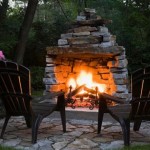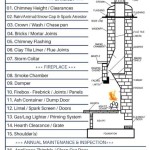```html
Manufactured Stone Veneer Fireplace: Aesthetics, Installation, and Considerations
Manufactured stone veneer fireplaces offer a compelling alternative to natural stone fireplaces, providing a similar aesthetic appeal at a potentially lower cost and with simplified installation processes. This article explores the various facets of manufactured stone veneer fireplaces, encompassing their advantages, installation techniques, design considerations, maintenance requirements, and the key factors to weigh when deciding if this material is suitable for a particular project.
Manufactured stone veneer, also known as faux stone or cultured stone, is a lightweight material crafted to replicate the appearance of natural stone. It is typically composed of a mixture of Portland cement, aggregates, and iron oxide pigments, carefully molded and colored to achieve a realistic stone-like texture and hue. This composition results in a product that is significantly lighter than natural stone, reducing the structural demands on the fireplace construction and simplifying transportation and handling.
Advantages of Manufactured Stone Veneer Fireplaces
The popularity of manufactured stone veneer for fireplaces stems from a variety of advantageous factors. One of the most significant benefits is its cost-effectiveness compared to natural stone. The manufacturing process allows for mass production, reducing the material cost and making it a more accessible option for budget-conscious homeowners. The lower weight of the material also contributes to cost savings by reducing transportation expenses and installation labor.
Installation of manufactured stone veneer is generally simpler and faster than installing natural stone. The uniform shape and size of the veneer pieces facilitate easier cutting and fitting, requiring less specialized skill and reducing installation time. This can translate to lower labor costs and a quicker project completion timeline. However, proper installation is still crucial to ensure the veneer’s longevity and aesthetic appeal.
Furthermore, manufactured stone veneer offers a wide range of design options. It is available in a variety of textures, colors, and profiles, allowing homeowners and designers to achieve a specific aesthetic vision. Whether the desired look is rustic, contemporary, or traditional, manufactured stone veneer can be selected to complement the overall design of the room. This versatility makes it a popular choice for both new construction and remodeling projects.
Finally, manufactured stone veneer is often more environmentally friendly than quarried natural stone. The manufacturing process typically involves using recycled materials and requires less energy than quarrying, transporting, and processing natural stone. This can contribute to a more sustainable building practice.
Installation Process of Manufactured Stone Veneer Fireplaces
Installing a manufactured stone veneer fireplace requires careful planning and adherence to specific procedures to ensure a durable and aesthetically pleasing result. The first step involves preparing the surface to which the veneer will be applied. This typically involves applying a layer of metal lath, also known as wire mesh, to the fireplace surround. The metal lath provides a mechanical key for the mortar, ensuring proper adhesion and preventing the veneer from detaching over time.
Next, a scratch coat of mortar is applied to the metal lath. The scratch coat provides a level surface for the veneer application and further enhances adhesion. It is crucial to allow the scratch coat to cure properly before proceeding with the veneer installation. The curing process typically takes 24 to 48 hours, depending on environmental conditions.
Once the scratch coat is cured, the veneer pieces are applied using a mortar specifically designed for stone veneer application. The mortar should be mixed according to the manufacturer's instructions to achieve the correct consistency and bonding strength. Each veneer piece is carefully placed and pressed firmly into the mortar, ensuring proper alignment and spacing. It is important to follow the manufacturer's recommendations for joint width and mortar jointing techniques.
After the veneer has been applied and the mortar has cured, the joints are typically finished using a technique called pointing or grouting. This involves filling the joints between the veneer pieces with mortar and then tooling the mortar to create a desired finish. Common jointing styles include recessed, flush, and over-grouted. The choice of jointing style can significantly impact the overall aesthetic of the fireplace.
Throughout the installation process, it is crucial to ensure that the veneer is properly sealed to protect it from moisture damage. A sealant specifically designed for stone veneer should be applied according to the manufacturer’s instructions. Proper sealing will help prevent water absorption, reduce the risk of staining, and prolong the life of the veneer.
Considerations for Selecting Manufactured Stone Veneer
Selecting the appropriate manufactured stone veneer requires careful consideration of several factors. The first is the aesthetic appeal of the veneer. It is important to choose a style and color that complements the overall design of the room and the architectural style of the house. Consider factors such as texture, color variation, and the size and shape of the veneer pieces.
Another important consideration is the quality of the veneer. Look for reputable manufacturers who use high-quality materials and processes to ensure the durability and longevity of the product. Read reviews and check for certifications to ensure that the veneer meets industry standards for performance and safety. Poor quality veneer may be prone to cracking, fading, or delamination.
The cost of the veneer is also a significant factor. Compare prices from different suppliers and consider the total cost of the project, including materials, labor, and any necessary accessories. While manufactured stone veneer is generally less expensive than natural stone, prices can vary depending on the style, quality, and quantity of veneer required. It is prudent to get multiple quotes to ensure a competitive price.
Finally, consider the maintenance requirements of the veneer. While manufactured stone veneer is generally low-maintenance, it is important to clean it periodically to remove dirt and stains. Follow the manufacturer's recommendations for cleaning and maintenance to avoid damaging the veneer. Regular inspection and prompt repair of any damage will help prolong the life of the veneer and maintain its aesthetic appeal.
Building codes and regulations are also crucial to consider. Ensure that the installation complies with all local building codes and fire safety regulations. This may involve obtaining permits and having the installation inspected by a qualified building inspector. Compliance with building codes is essential to ensure the safety and legality of the fireplace.
Choosing the right professional for the installation is critical. A qualified and experienced installer can ensure that the veneer is properly installed and that the fireplace meets all safety standards. Check the installer's credentials, references, and insurance coverage before hiring them. A poorly installed veneer fireplace can be both unsightly and unsafe.
Consider long-term durability and resistance to environmental factors. While manufactured stone veneer is designed to withstand outdoor conditions, some types are more durable than others. If the fireplace is located in an area with harsh weather conditions, choose a veneer that is specifically designed to withstand those conditions. Factors such as freeze-thaw resistance and UV resistance are important considerations.
The overall design and scale of the fireplace should be carefully planned. The size and shape of the fireplace should be proportionate to the room and the overall design of the house. Consider the placement of the fireplace within the room and how it will interact with other design elements. A well-designed fireplace can become a focal point of the room, while a poorly designed fireplace can detract from the overall aesthetic.
Finally, think about the resell value of the home. A well-designed and properly installed manufactured stone veneer fireplace can enhance the value of the home. Choose a style and color that is timeless and that will appeal to a wide range of potential buyers. A high-quality veneer fireplace can be a valuable asset when it comes time to sell the home.
```
The Pros And Cons Of Manufactured Stone Veneer Home Resources Abr

Thin Cut Stone Vs Cultured Veneer The Stoners

Cultured Stone Veneer Fireplaces Main Street Fireplace Patchogue Serving Long Island Ny

Cultured Stone Fireplaces The Stoners

Stone Fireplace Design And Remodel

Thin Stone Veneers Make A Fireplace Update Easy

Cultured Stone Manufactured Veneer Csi All Things Can En

Stone Veneer Fireplace Ideas That Will Warm Up Your Home Ply Gem

Faux Stone Panels Veneer Selex

Manufactured Stone Veneer Fireplace And Chimney Authority
Related Posts








